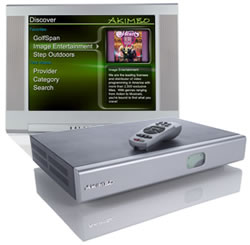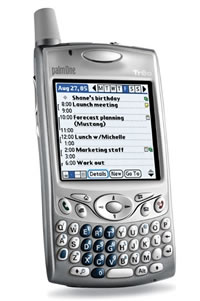It’s just bargain after bargain, as companies keep pushing out the barriers to attract new customers or hang on to existing ones, using every technological and communications innovation available. Now BT is offering its new and existing, business and consumer broadband customers, public wireless broadband for just £1 a month. Remember that BT already have a Bluephone in the offing – a mobile phone that will provide cheap Web-based phone calls from Wi-Fi hot spots anywhere in the world.
The service is called BT Openzone and there are two introductory discount deals of £1 per month for up to 500 minutes available to BT Business Broadband customers and BT Broadband and BT Yahoo! 500 minutes is only eight hours a month though, and this may not be enough for some people. It is offered to BT customers, who sign up before December 31, 2004. After the first three months, customers can continue using the exact same service for a further 12 months for £5 a month.
Aimed at people on the move who need to keep in touch, customers can log on to BT Openzone with their Wi-Fi enabled laptop or PDA when within range of over 7,000 hotspot locations across the UK, including hotels, airports, railway stations and coffee shops. With cable companies, mobile operators and VoIP providers always offering trendy alternatives, Telcos have to keep going back to the drawing board.
But (she asked, scratching her head), why would you bother paying £5 or even £1 per month if all you have to do is hawk your laptop down to the nearest café, and get the whole lot for free, plus a really well-made cup of coffee?
Thousands of BT Openzone hotspots can be found in the UK and Republic of Ireland, in motorway service stations, airports, conference centres, hotels and cafés. Also, a Wi-Fi roaming agreement with BT Openzone, has increased the number of T-Mobile UK hotspots to 1,900, and customers of BT Openzone will now also have access to T-Mobile’s 600 UK Wi-Fi hotspots, as well as thousands more across Europe and the US. Now all we have to worry about is wireless security!
 We’ve been keeping our eye on Akimbo, an IP-delivered VOD (Video-On-Demand) service and have learnt that they are launching and have signed on Amazon.com as its official retailer. Akimbo has just launched its video-on-demand service and signed on Amazon.com as its official retailer. Akimbo is to video what Apple’s iTunes is to the iPod. The Akimbo Player, utilising an easy “Queue and View” format is a set-top box that delivers hundreds of mainly niche program videos to television through a broadband-Internet connection allowing consumers to choose content and view it on-demand – or maybe even later.
We’ve been keeping our eye on Akimbo, an IP-delivered VOD (Video-On-Demand) service and have learnt that they are launching and have signed on Amazon.com as its official retailer. Akimbo has just launched its video-on-demand service and signed on Amazon.com as its official retailer. Akimbo is to video what Apple’s iTunes is to the iPod. The Akimbo Player, utilising an easy “Queue and View” format is a set-top box that delivers hundreds of mainly niche program videos to television through a broadband-Internet connection allowing consumers to choose content and view it on-demand – or maybe even later. A finer, mellow blend of phone and PDA, PalmOne launched the Treo 650 in the US yesterday. There are changes on the outside and changes on the inside – some cosmetic, some ergonomic, and some fundamentally technical. I’d be happy to ditch my current phone if I won this in a raffle!
A finer, mellow blend of phone and PDA, PalmOne launched the Treo 650 in the US yesterday. There are changes on the outside and changes on the inside – some cosmetic, some ergonomic, and some fundamentally technical. I’d be happy to ditch my current phone if I won this in a raffle!